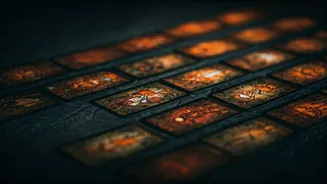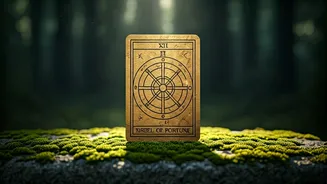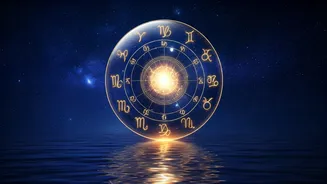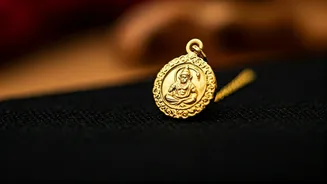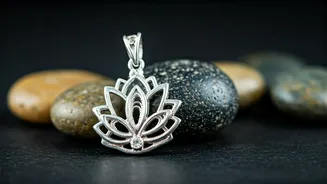Origins of the Tarot
The exact beginnings of Tarot are somewhat shrouded in mystery, yet most scholars trace its origins back to 15th-century Europe. Initially, Tarot cards
were not used for divination but rather served as playing cards, similar to modern-day card games. These early decks, often lavishly illustrated, were a form of entertainment for the elite. Over time, the cards evolved beyond mere games. The imagery and symbolism inherent in the cards, particularly the Major Arcana, began to draw the interest of occultists and mystics, who saw potential for spiritual and predictive practices. This shift marked the beginning of Tarot's journey toward the divination tool it is known as today, with the addition of esoteric meanings and associations influencing how the cards were interpreted and used to understand various aspects of life.
Structure of the Deck
A standard Tarot deck comprises 78 cards, split into two main sections: the Major Arcana and the Minor Arcana. The Major Arcana contains 22 cards, each depicting powerful archetypes and significant life events. These cards often represent major themes, life lessons, and influential forces that shape one's journey. Examples include 'The Fool,' symbolizing new beginnings and taking risks, and 'The Lovers,' representing choices and relationships. The Minor Arcana, in contrast, consists of 56 cards, divided into four suits: Wands (representing fire and action), Cups (representing water and emotions), Swords (representing air and intellect), and Pentacles (representing earth and material possessions). Each suit contains ten numbered cards and four court cards (Page, Knight, Queen, and King). The Minor Arcana cards generally relate to everyday situations, daily challenges, and the more nuanced aspects of life, offering further detail to a reading.
Decoding Card Meanings
Understanding the individual meanings of each Tarot card is fundamental to reading the Tarot. Each card has a variety of interpretations. The meanings can range from direct to more symbolic, representing the situation being examined. For instance, 'The Sun' card typically represents joy, success, and positivity, while 'The Tower' might signal sudden change or upheaval. It’s also vital to be aware of the interplay of the cards, meaning their interaction to gain more precise interpretations. In a spread, the position of each card within the spread and the cards adjacent to it influence the meaning as well. As you become more familiar with a card’s meaning, you can also use your intuition to guide you. Personal experiences and insights often add extra meaning to the cards, enhancing their interpretation.
Reading the Tarot
Tarot readings can be tailored to address various questions or explore different aspects of life, such as relationships, career, or personal growth. Readers often begin by selecting a spread, which is a specific arrangement of cards. The simplest spread is a three-card spread, where one card signifies the past, one the present, and one the future. More complex spreads, like the Celtic Cross, involve many cards and delve into intricate layers of meaning. When dealing with the Tarot, it is essential to focus your thoughts and formulate a clear question or intention to gain insightful answers. When the cards are laid out, the reader interprets the positions of the cards, their individual meanings, and the patterns that emerge to offer a unique perspective. Always remember, the Tarot is a tool for gaining insights, not a definitive predictor of the future.
Ethical Considerations
The practice of Tarot reading carries with it a strong sense of responsibility. As a reader, it's vital to handle the interpretations with sensitivity and integrity. It is important to emphasize that the cards provide guidance and insights and do not dictate one's destiny. Avoid making predictions about events that are fixed or unchangeable. Readings should always empower and encourage individuals to take control of their own lives. Be mindful of not exploiting people's vulnerabilities or dependencies. Always offer a balanced perspective, considering both the positive and negative aspects. Moreover, the privacy of the querent should be respected, ensuring that all information remains confidential. Ethical practices in Tarot reading build trust and foster an environment where individuals can receive genuine guidance and explore their potential.
Tarot for Beginners
Embarking on a Tarot journey can be a deeply rewarding experience. Start by selecting a deck that resonates with you; the artwork and design should appeal to your sensibilities, and make it easier to connect with the cards. Begin with a thorough study of the meanings of each card, perhaps using a guidebook or online resources. Focus on understanding the core meanings before trying to memorize them. To practice, try simple one-card or three-card readings for yourself or trusted friends. Start slowly, and don't feel discouraged if you don’t immediately grasp everything. Keep a journal to record your readings, noting the questions you asked, the cards you drew, and your interpretations. Over time, you’ll start to see patterns and develop a more intuitive understanding. The most important aspect is to be patient, open-minded, and enjoy the process of learning and self-discovery.
